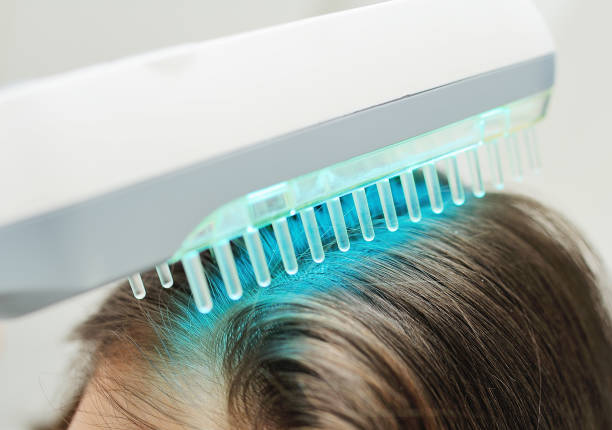
Red Light vs UVB: Which Light Therapy Works Best for Psoriasis & Eczema?
Share
Managing chronic skin conditions like psoriasis and eczema can feel overwhelming—especially when the treatments seem complex. But two light-based solutions are standing out as popular and promising options: red light therapy and UVB phototherapy. In this post, we'll break down red light vs UVB, explore how each works, and highlight the products available at Australian Psoriasis & Eczema Supplies that may help you find relief—right from home.
Understanding Red Light Therapy
What Is Red Light Therapy?
Red light therapy, also known as low-level light therapy, uses specific wavelengths—commonly around 660 nm—to penetrate the skin and deliver therapeutic benefits. It’s often promoted for easing inflammation, soothing skin irritation, and aiding cellular repair.
How It Works on Skin Conditions
This therapy is believed to calm inflammatory pathways and boost skin cell restoration, leading to reduced redness, plaque thickness, and itching over time. While many users report improvement, clinical trials are still evolving to fully validate its long-term effectiveness.
Noteworthy Considerations
Red light therapy is generally safe and non-invasive. However, effectiveness can vary depending on device quality and consistency of use. Importantly, red light devices must clearly state their intended use for skin conditions and be backed by user reviews or research, which is why we only feature robust, trusted products on our site.
Understanding UVB Phototherapy
What Is UVB Light Therapy?
UVB therapy uses ultraviolet B light—typically in the narrow band of 311–313 nm—to treat psoriasis, eczema, vitiligo, and other skin disorders. It's one of the most well-established light therapies in dermatology. Narrowband UVB (NB-UVB) is favoured for its effectiveness and safety profile over broader UVB and UVA treatments.
Mechanism of Action
UVB light penetrates the outer skin layer (the epidermis) and works by:
-
Suppressing overactive immune cells (T-cells)
-
Slowing abnormal skin cell proliferation
-
Reducing inflammation and easing symptoms like itching and scaling
It has decades of research supporting its efficacy for achieving remission or long-term control.
Safety and Usage
When used properly—i.e., under the "sub-erythemic dose"—narrowband UVB is considered safe, though long-term monitoring is recommended. Home UVB systems allow frequent, controlled treatments without recurring clinic visits.
Red Light vs UVB — What’s the Difference?
Wavelength & Penetration
| Therapy | Wavelength | Penetration Level |
|---|---|---|
| Red Light | ~660 nm | Deep into skin layers |
| UVB | 311–313 nm (Narrowband) | Epidermis (skin surface) |
-
Red light penetrates deeper and is aimed at reducing inflammation and supporting repair.
-
UVB acts at the epidermis, helping to suppress abnormal skin growth and immune triggers.
Clinical Evidence & Effectiveness
-
UVB phototherapy is backed by decades of clinical use and trusted by dermatologists for treating moderate to severe psoriasis and eczema.
-
Red light therapy shows promising signs and user reports (e.g., reduced plaque thickness and itching), but more large-scale studies are needed.
Safety Profiles
-
UVB has known risks, particularly with overexposure—redness, burns, and long-term skin cancer risks if not used correctly—but remains safe when used under guidelines.
-
Red light tends to be safer with fewer documented adverse effects, though individual results may vary.
Products from Australian Psoriasis & Eczema Supplies
UVB Devices
-
Skin Soothing UVB Lamp (Dermalight™) — A dermatologist-grade narrowband UVB device priced at $325.50 AUD. Trusted for psoriasis and eczema relief at home, with 321 reviews praising its effectiveness and ease of use.
-
Precision Targeted UVB Light Therapy Device — A focused, premium unit (approximately $989 AUD), ideal for targeting stubborn patches like vitiligo or plaque psoriasis. Includes protective eyewear and offers portable relief.
Choosing the Right Light Therapy for You
Consider Your Skin Condition
-
For moderate to severe psoriasis or eczema, NB-UVB therapy is the most clinically supported choice, with proven remission rates.
-
For general skin soothing or inflammation, red light may help—but clinical evidence remains emerging.
Evaluate Safety & Convenience
-
Want a fast, proven outcome? UVB is highly effective but requires careful use and eye protection.
-
Prefer a gentler, possibly safer route? Red light may feel more convenient, especially if you're sensitive to UV exposure.
Product-Informed Recommendation
-
Best clinically proven option: Dermalight™ UVB Lamp or Precision Targeted UVB Device for targeted, at-home treatments.
-
If exploring gentle light therapy: Browse our Light Therapy collection for supportive, soothing tools—ideal if you're trialing non-UV methods or supplementing other treatments.
Final Thoughts — Red Light vs UVB
Summary
-
UVB phototherapy is a trusted, evidence-based treatment for psoriasis and eczema, especially effective for moderating flare-ups and long-term control.
-
Red light therapy is promising for reducing skin inflammation and discomfort but needs more extensive validation in clinical settings.
Your Next Steps
-
Consult your dermatologist, especially if you're considering UVB therapy.
-
Start with products like the Dermalight™ UVB Lamp for proven relief, or explore our Light Therapy collection if you're curious about supplementary non-UV options.
-
Follow guidelines, monitor your skin response, and adjust treatments as needed for safe, effective results.
